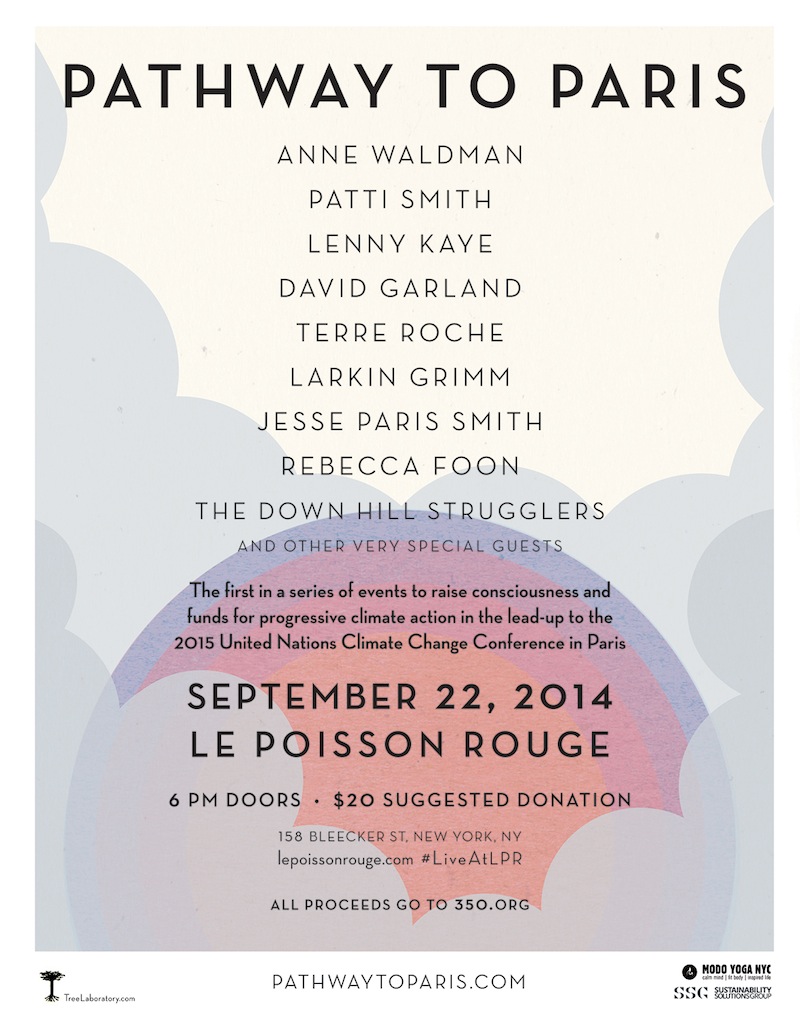A benefit for 350.org, building a global climate movement
an afterparty for the People’s Climate March
featuring:
Anne Waldman
Patti Smith + Lenny Kaye
David Garland
Terre Roche
Larkin Grimm
Jesse Paris Smith
Rebecca Foon
Thurston Moore
and other very special guests
$20 suggested donation
All proceeds go to 350.org
Pathway to Paris official site
This is a general admission, standing event. Happy hour from 6-7pm including $3 beer and $5 well drinks.
This event will be streamed live online through LPR’s streaming channel, beginning at 6:30pm.
4
5
7
Anne Waldman
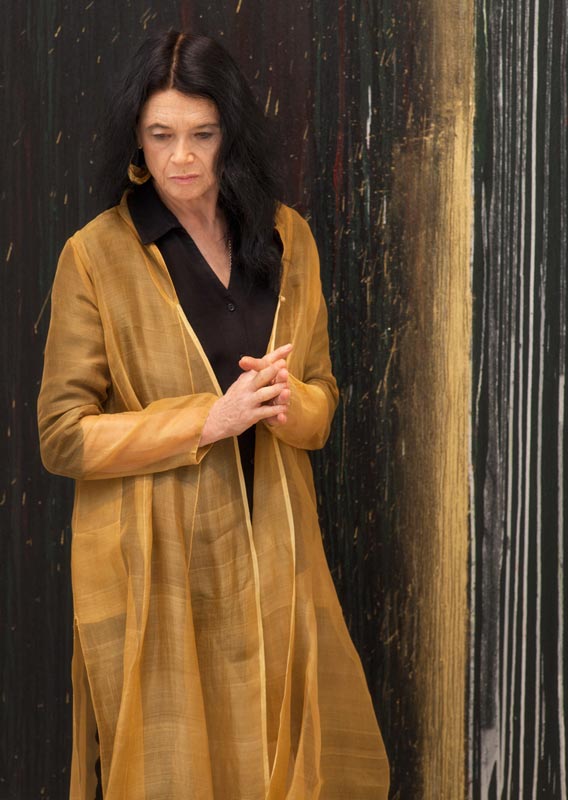
Internationally recognized and acclaimed poet Anne Waldman has been an active member of the “Outrider” experimental poetry community, a culture she has helped create and nurture for over four decades as writer, editor, teacher, performer, magpie scholar, infra-structure curator, and cultural/political activist. Her poetry is recognized in the lineage of Whitman and Ginsberg, and in the Beat, New York School, and Black Mountain trajectories of the New American Poetry. Yet she remains a highly original “open field investigator” of consciousness, committed to the possibilities of radical shifts of language and states of mind to create new modal structures and montages of attention. Her work is energetic, passionate, panoramic, fierce at times. She is the author of more than 40 books, including the mini-classic Fast Speaking Woman, a collection of essays entitled Vow to Poetry and several selected poems editions including Helping the Dreamer, Kill or Cure and In the Room of Never Grieve. She has concentrated on the long poem as a cultural intervention with such projects as Marriage: A Sentence, Structure of The World Compared to a Bubble, and Manatee/Humanity, which is a book-length rhizomic meditation on evolution and endangered species, and the monumental anti-war feminist epic The Iovis Trilogy: Colors in the Mechanism of Concealment, a 25 year project.
Read more at annewaldman.org…
Lenny Kaye
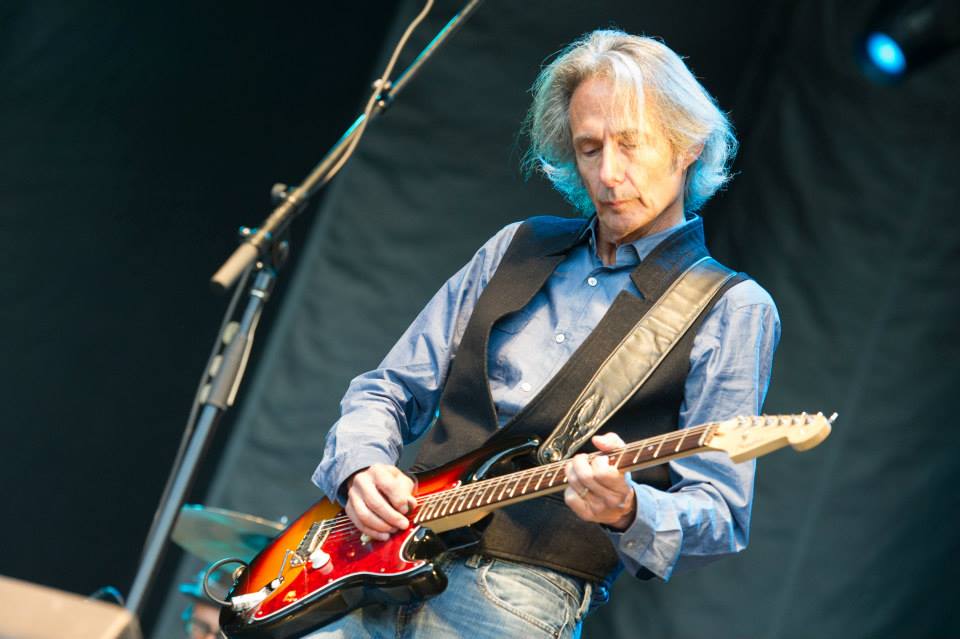
As musician, writer, and record producer, Lenny Kaye has been intimately involved with the creative impulse that marks the music. He has been a guitarist for poet-rocker Patti Smith since her band’s inception more than thirty years ago, and is the co-author of Waylon, the life story of Waylon Jennings. He has worked in the studio with such artists as Suzanne Vega, Jim Carroll, Soul Asylum, Kristen Hersh, and Allen Ginsberg, as well as his own solo muse. His seminal anthology of sixties’ garage-rock, Nuggets, has long been regarded as defining a genre.You Call It Madness: The Sensuous Song of the Croon, an impressionistic study of the romantic singers of the 1930’s, was published by Villard/Random House in 2004.
Lenny was born on December 27, 1946, in the Washington Heights area of upper Manhattan, New York, along the Hudson River in the shadow of the George Washington Bridge. Growing up in Queens and Brooklyn, Lenny originally began playing accordion, but by the end of the 1950s, had dropped the instrument in favor of collecting records. His family moved to North Brunswick, New Jersey, in 1960 where Lenny attended high school, and later, college, graduating Rutgers in 1967. Though he majored in American History, his true avocation was musical, and it was there that he first began playing in bands, on a college mixer and fraternity circuit later immortalized in Animal House. His first gig, with the Vandals (“Bringing down the house with your kind of music”), was at Alpha Sigma Phi on November 7, 1964.
His uncle, songwriter Larry Kusik (“A Time For Us” from Romeo and Juliet; “Speak Softly Love” from The Godfather) took note of his lengthening hair and musical commitment, and asked him to sing on a song he’d recently penned with Ritchie Adams, once of the Fireflies (“You Were Mine”). It was the fall of 1965, and folk-protest was in the air. Lenny soon found himself in Associated Recording Studios on Times Square, recording “Crazy Like A Fox,” along with its flip side, “Shock Me. ” The resultant 45, issued under the name of Link Cromwell, was leased to Hollywood Records, a division of Starday Records located in Nashville, Tennessee, and released in March of 1966. It garnered a Newcomer Pick of the Week from Cashbox (“A rhythmic bluesy folk-rocker with a pulsating beat”) and was issued in England as well as Australia; but failed to move in the charts. Though hardly a smash, it did give Lenny a sense of himself as a musician, and inspired him to continue performing and playing. His group at the time, The Zoo, worked a college circuit ranging from New York to Pennsylvania; this early experience has been captured on a live album issued by Norton Records, Live 1966.
Moving back to the city, Lenny began writing reviews for Jazz and Popmagazine; branching out to such nascent rock publications as Fusion,Crawdaddy, and Rolling Stone. He became the music editor of Cavalier, a men’s magazine that at the time was also publishing the early short stories of Steven King, and would write a monthly column for them until 1975; and the New York correspondent for the British weekly,Disc. As a free-lance writer, he would write for a wide range of periodicals, including Melody Maker, Creem, and edit such publications as Rock Scene and Hit Parader throughout the seventies.
While working at Village Oldies on Bleecker St. in New York, he met poet-singer Patti Smith. On February 10, 1971, he backed her at a reading at St. Mark’s Church on E. 10th St. When they resumed performance in November of 1973, their artistic efforts bore fruit as one of the major rock bands of the 1970s. Lenny produced Patti’s debut single (“Hey Joe / Piss Factory”), and performed as part of her Group throughout the decade, as reflected in four Arista albums: Horses(1975), Radio Ethiopia (1976), Easter (1978), and Wave (1979).
Following the PSG’s final performance in September of 1979, Lenny joined the Jim Carroll Band, as well as fronting his own Lenny Kaye Connection. He co-produced Suzanne Vega’s first two albums, including her 1987 hit single, “Luka,” which was nominated for a Grammy as Record of the Year. He has been nominated three times for Grammy awards in the liner notes category for boxed sets on the sixties folk revival (Bleecker and MacDougal), white blues (Crossroads), and progressive rock (Elektrock); and has co-authored a comprehensive hall of fame with David Dalton (Rock 100).
In 1995, he reunited with Patti Smith and has been a part of Her Band since, creating five studio albums, a retrospective, and celebrating the thirtieth anniversary release of their landmark debut album, Horses.
Thurston Moore
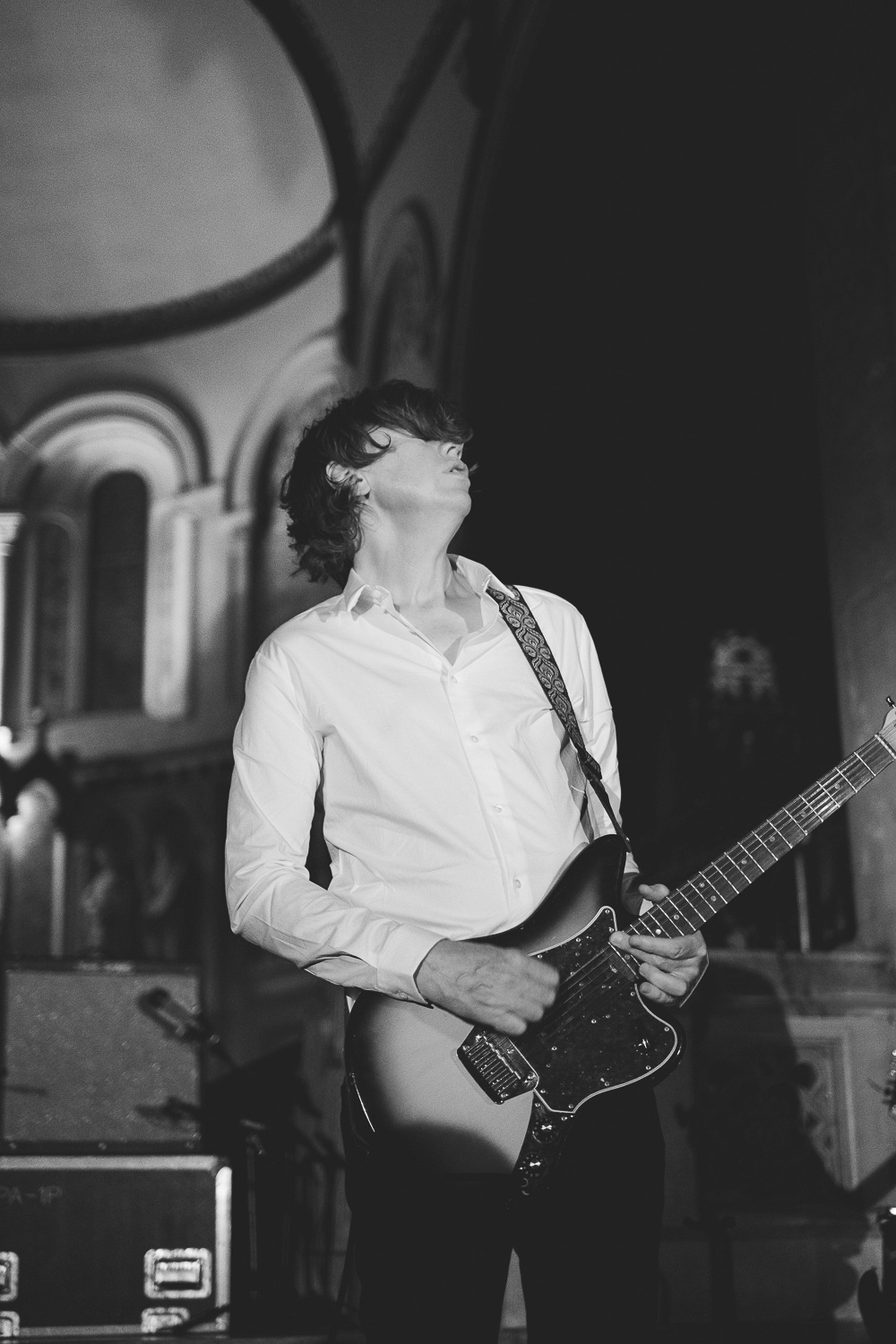
Thurston Moore Official Website | Thurston Moore on Facebook | Thurston Moore on Twitter | Thurston Moore on Instagram
Thurston Moore moved to NYC at eighteen in 1976 to play punk. He started Sonic Youth in 1980. Since then Thurston Moore has been at the forefront of the alternative rock scene since that particular sobriquet was first used to signify any music that challenged and defied the mainstream standard. With Sonic Youth, Moore turned on an entire generation to the value of experimentation in rock n roll – from its inspiration on a nascent Nirvana, to Sonic Youth’s own Daydream Nation album being chosen by the US Library of Congress for historical preservation in the National Recording Registry in 2006. Thurston records and performs in a cavalcade of disciplines ranging from free improvisation to acoustic composition to black/white metal/noise disruption. He has worked with Yoko Ono, John Zorn, David Toop, Cecil Taylor, Faust, Glenn Branca and many others. His residency at the Louvre in Paris included collaborations with Irmin Schmidt of CAN. Alongside his various activities in the musical world, he is involved with publishing and poetry, and teaches writing at Naropa University, Boulder CO, a school founded by Allen Ginsberg and Anne Waldman in 1974. Thurston also teaches music at The Rhythmic Music Conservatory (Rytmisk Musikkonservatorium) in Copenhagen.
Presently he performs and records solo, with various ensembles and in his own band, The Thurston Moore Group (with mbv’s Deb Googe, Steve Shelley & James Sedwards). In 2014, the band released The Best Day which critics described as “optimistic and sun-drenched in beauty” and “[has] experimental attitude dovetailed with instantly accessible pop melodies.” The Best Day was a record defined by positivity and radical love. In 2017 Thurston Moore Group’s released a full-length album, Rock n Roll Consciousness which was recorded in The Church studios in London with producer Paul Epworth. The songs are expansive, anthemic and exploratory with lyrics that investigate and herald the love between angels, goddess mysticism and a belief in healing through new birth. Ranging from opener “Exalted”, an unfolding and emotional journey in homage to sacred energy and exaltation, to “Cusp” a charging, propulsive piece with a feeling of Sonic Youth mixing in with My Bloody Valentine. “Turn On” is a pop-sonic poem to holy love both intimate and kosmiche to the contemplative mystery of life-defining time travel in “Smoke of Dreams”. The record concludes with “Aphrodite”, a strange and heavy no-wave rocker in salutation to the idol of love, beauty, pleasure, and procreation.
Thurston Moore’s new release entitled SPIRIT COUNSEL is a box set of new material recorded between 2018-19, including the epic tracks such as“Alice Moki Jayne” dedicated to Alice Coltrane, Moki Cherry and Jayne Cortez “8 Spring Street” an homage to his late teenage mentor Glenn Branca and “Galaxies” a symphonic masterpiece constructed of twelve musicians playing 12-string electric guitars. THE SPIRIT COUNSELTOUR will commence on International Peace Day, September 21, 2019 with tour dates to be announced.
David Garland

David Garland’s early fascination with adventurous music was confirmed in 1968 when he attended a concert by Jimi Hendrix and had his 13-year-old mind blown by the opening act, England’s Soft Machine. Growing up in an artistic family in Lexington, Massachusetts, Garland played drums in what was literally a garage band, and taught himself piano and guitar. By the time he attended Rhode Island School of Design (’72-’76, overlapping with members of Talking Heads), Garland was organizing free-improv ensembles, playing jazz piano, composing chamber music, and singing songs. After graduating with honors from RISD, Garland moved to New York City and for ten years supported himself as a graphic designer and illustrator, free-lancing for pianist Paul Bley’s Improvising Artists Inc. record label, La Monte Young, and others. But he was in New York primarily to hear and make music.
Garland developed, on piano, an approach to improvisation he considered “instant composition,” and also composed ensemble pieces that were influenced by minimalism; he presented these at the avant garde center The Kitchen and elsewhere. In 1980 Garland joined bassist Bill Laswell, singer Shelley Hirsch, and others, in Nigel Rollings’ band Ad Hoc Rock, as drummer and later as guitarist, keyboardist, and singer. The band played many venues, including The Kitchen, a benefit at Carnegie Hall, and the seminal 1981 “Noise Fest” at White Columns.
In 1980 Garland wrote the first of his Control Songs, a genre he created to contain his otherwise uncategorizable songs, which combined his interests in melody, noise, and the song form, with lyrics addressing the “elusive but necessary sense of control that helps us function.” Instrumentation ranged from mediaeval bowed psaltery to the then-brand-new Fairlight CMI, one of the first digital samplers. Garland soon performed these songs solo in the very first music series at The Knitting Factory, at New Music America Festivals, and on tour in Europe. Garland’s first album, “Control Songs,” was issued in 1987 on the German label Review Records, and included musicians John Zorn and Christian Marclay.
In 1985 and ’86 Garland was one of five improvising vocalists, with Arto Lindsay, Shelley Hirsch, David Moss, and Sussan Deihim, in “Dead Stories” and “Tower of Babel”—concert and theater projects by turntable pioneer Christian Marclay. Garland formed the band The Worlds of Love with banjo and synthesizer player Cinnie Cole and percussionist Ikue Mori (of DNA). They released an album (also on Review Records) and toured in Europe in 1989. Garland worked with The Worlds of Love to record an album of songs by Brian Wilson of the Beach Boys, which was ultimately released as Garland’s “I Guess I Just Wasn’t Made for These Times” in Japan in 1993.
Garland continued to release innovative albums on small labels, including “Togetherness: Control Songs Vol. 2” (Ergodic, 1999), “My Vortex Camera: Control Songs Vol. 3” (Review, 2000), and “On the Other Side of the Window” (Review, 2003). Though these albums haven’t been widely heard, Village Voice critic Kyle Gann hailed Garland as “the best songwriter of my generation, bar none,” and Garland’s music is the subject of essays in Gann’s 2006 book Music Downtown. Robert Wyatt, drummer and singer in Soft Machine, the band that had so impressed the 13-year-old Garland, has called Garland’s songs “terrific, a great surprise,” and praised him for bringing “such originality and freshness to what is usually a cliche-ridden genre.” Garland’s 2007 album “Noise In You” (Family Vineyard) is his most heartfelt and imaginative, and his first to be widely distributed. In “Noise In You” Garland has created a sumptuous experimental song cycle in which his voice is joined by the voices of some of the most creative of a younger generation of song-inventors: Sufjan Stevens, Diane Cluck, and others
David Garland official site
Terre Roche

Terre Roche is an internationally acclaimed professional musician, composer, arranger, vocalist, performer and teacher with a career spanning 35 years. She is best known for her work with her sisters as The Roches. Terre has extensive experience working with harmony singing, guitar playing, ensemble and solo performing. As an experienced studio musician she has played and sung on many projects of diverse musical styles. For the last 15 years, Terre has been a dedicated music teacher.
Terre Roche official site
Larkin Grimm
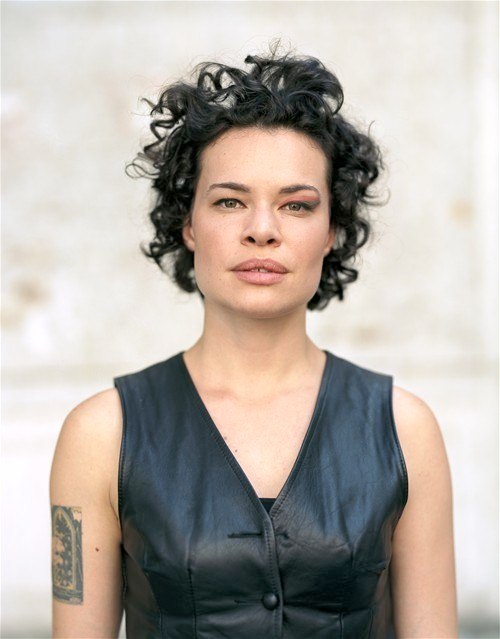
Larkin Grimm was born 27 years ago in Memphis TN to hippie devotees of the religious cult The Holy Order Of MANS – her parents were runaway kids that met in San Francisco in the late 60’s and eventually found their way into the cult, which later moved to Memphis. Larkin spent her early years in this communal environment, raised by several parents at once. When the cult disbanded Larkin was 6, and her nuclear family moved to the Blue Ridge Mountains in Georgia and quickly grew to include 5 siblings. Larkin says she ran wild in the mountains and was “raised by the family dog.” Larkin got the taste of music in her from her fiddler and singer father and her folksinger mother. She dropped out of school at 10 and didn’t return until 12. At 13 she was sent to boarding school (courtesy of Georgia’s Coca Cola, which funds the school with the intent of helping gifted Appalachian children). Larkin excelled, (though her erupting hormones and wild imagination were already roaring) and she won a full scholarship to Yale to study art. She spent a while there then freaked out at the elitism of the place. She left and returned several times, somehow along the way managing to find herself in Thailand, where she studied Thai healing massage and “befriended strippers and watched them being humiliated and abused by sex tourists”, bummed around Guatemala, and also hitchhiked around southern Alaska by herself, until she found a place “so beautiful I couldn’t leave, camped out there in my tent for about 2 months with the plan to starve to death, get eaten, or get enlightened.” Larkin says a Cherokee shaman named Jezebel Crow found her on the mountaintop and lured her to her truck with the promise of maple syrup and sausages. She became her “first great teacher, initiating me into the shamanic practice of using natural hallucinogens to gain spiritual wisdom. On one such trip, I got my first jolt of golden light to the brain and was possessed by a forest spirit who taught me to sing.” Jezebel drove her down to her commune in Olympia, Washington, where she would live off and on for a few years, soon hanging out with “eco-warriors, vagabonds, sexual deviants and various other miscreants.” But Jezebel encouraged Larkin to go back to Yale and when she returned Larkin started incorporating singing into her art practice, which led her finally to decide to become “a real musician”.
Back at Yale for the last time (eventually “graduating” with one credit left to go) Larkin met Dave Longstreth and became a member of Dirty Projectors for a time. When she left that band she joined up with the Providence RI Noise/Art scene, and was active in arranging gigs and festivals there, as well as working on her own music. Larkin soon made 3 self-recorded albums of freeform, improvisational songs (or “acoustic noise” as she calls it), 2 of which were released by Secret Eye (Harpoon, and The Last Tree). She books her own tours, travels constantly, and has by her own force of will, itinerant nature, and sense of reckless adventure managed to build a supportive network of friends and fans around Europe and the US/Canada. Larkin has shared bills with The Mountain Goats, St. Vincent, Vetiver, Sleepy Sun, The Great Lake Swimmers, Lightning Bolt, Devendra Banhart, Spires that in the Sunset Rise, Espers, Mi and L’au, Brightblack Morning Light, Entrance, Viking Moses, the Microphones, and Old Time Relijun to name a few. She currently resides in Manhattan’s East Village.
Larkin Grimm official site
Photo credit: Ports Bishop
Jesse Paris Smith

Rebecca Foon

Rebecca Foon is a Montreal-based cellist, best known as co-founder of contemporary chamber group Esmerine and member of Thee Silver Mt. Zion, Set Fire To Flames, The Mile End Ladies String Auxiliary, Fifths Of Seven and most recently Saltland. Foon began composing solo work in 2010, featuring multi-layered cello and hushed, stark vocals that explored the intersection of drone, no-wave, improv, dream-pop and minimalism. Foon’s live performances in Montreal and abroad over the past two years have seen her sound progress towards gently rhythmic and electronic territory as well. She has transfixed audiences with this new music while sharing the stage with Mary Margaret O’Hara, Julia Kent, Nat Baldwin, Moonface and Sam Amidon, among others. As her largely home-recorded debut album began taking shape throughout 2011, with numerous guests contributing to various pieces, Foon adopted the Saltland moniker for this work.
Rebecca Foon has called Montreal home since moving from Vancouver at age 17 in 1996 and has been a fixture of Montreal’s DIY music scene ever since, playing with countless local ensembles in a wide range of contexts and on albums by Vic Chesnutt, Islands, British Sea Power, Carla Bozulich, Land Of Kush and Little Scream among others. She has collaborated in concert with Patti Smith, Warren Ellis and with Nick Cave and the Bad Seeds, composes work for short film with the National Film Board Of Canada, was a core participant in the National Parks Project music and film documentary initiative, has performed with Tanya Tagaq and as a support player for other Inuit musicians, and scored the documentary H2Oil about Alberta’s tar sands oil extraction. Foon pursues all this musical activity alongside her role as a member of Sustainability Solutions Group, a national Canadian urban sustainability cooperative.
Rebecca Foon official site


